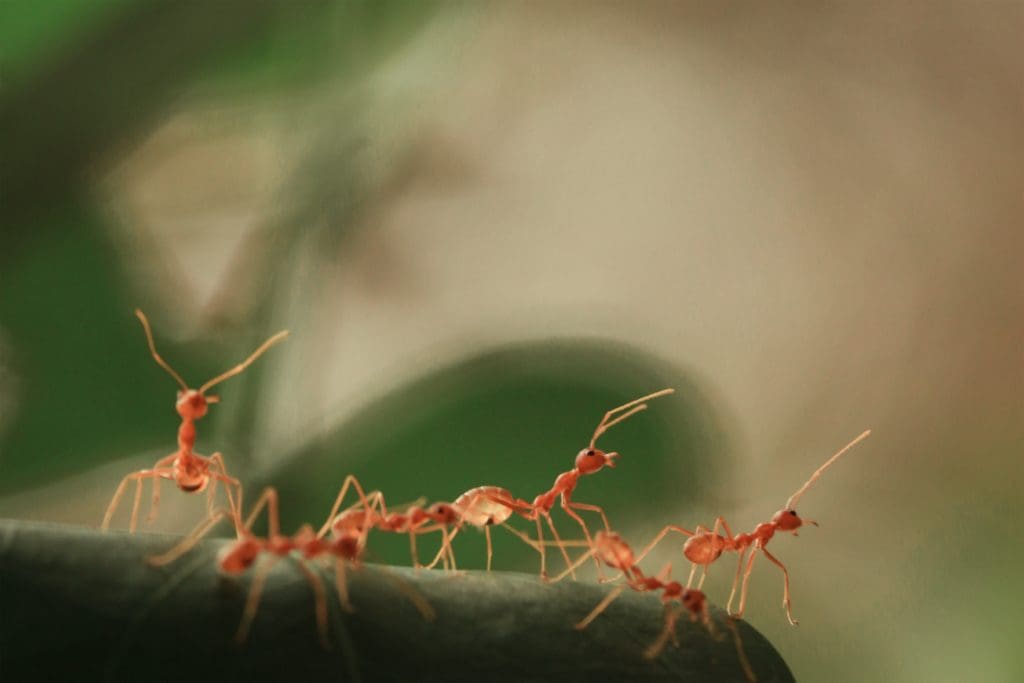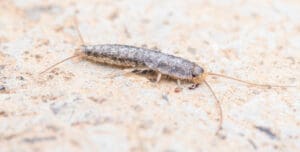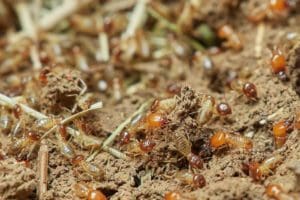

While ants play an important role in our ecosystem, most of us don’t welcome them in our homes. In the warmer months, they tend to gather in kitchens and areas where there’s food. And where there’s one, there’s many!
If you want to learn more about ants and how to get rid of them, keep reading.

Why Do Ants Enter Our Homes?
Ants mainly enter our homes looking for food, water, and shelter. In the warmer southern regions of the US, ants can be a year-round problem. In the colder northern areas, they are usually a perennial summer problem and ants will be visible from late spring.How Do Ants Get into Our Homes?
Any hole or small opening that is slightly larger than themselves will be used by ants to gain entry into your home. Cracks in foundations, and unsealed doors and windows are favorite entry points. Ants also use trees and shrubs that touch buildings as pathways to gain entrance around pipes and electrical wiring. Ants can also be accidentally brought inside unseen on furniture, toys, and potted plants.Common Ant Types In New Jersey
Common types of ants in the US include the acrobat, carpenter, odorous house, pharaoh, and thief ants. In New Jersey, common ants to watch out for are fire, carpenter, and sugar ants. These names describe the ants well in that fire ants can sting if they perceive you as a threat, carpenter ants’ nest in wood, and sugar ants are after the sweet stuff like sugar and honey.Where In The Home Do Ants Infest?
Ants favor places with food, so kitchens, pantries, and trash cans are the most likely areas for an infestation. Ants will eat almost anything, but they do have a liking for sweet sugars and starches. Over-ripe fruit and vegetables are another favorite. Damp bathrooms are another area where ants gather looking for water. Watch around sinks, tubs, toilets, and shower cubicles, particularly if they leak or silicone seals are loose or broken.
Where Do Ants Nest?
Outdoors Most ants nest in underground colonies they build in the soil. Some ants, such as carpenter ants, nest in decaying wood such as fallen logs and stumps in damp areas. Wood-nesting ants can become a real problem if they nest in the structural woodwork of a home in roof trusses and structural beams. Indoors When ants nest in your home they can be incredibly annoying. The nest is the primary problem, so just storing food safely won’t get rid of the nest. Indoor nests can be found under flooring, in wall voids and rotten woodwork. The nests are usually close to food and water sources in kitchens, pantries, bathrooms and basements. Ants can also often be found in and around air-conditioning and heating units which create damp areas with waste-water run-off.Professional Ant Prevention Tips
There are many ways to prevent ant infestations in your home. Tips from the pros include:- Seal gaps
- Eliminate pathways
- Create barriers
- Avoid taking ants inside
- Check for moisture buildup
- Keep food preparation areas clean
- Use ant traps






